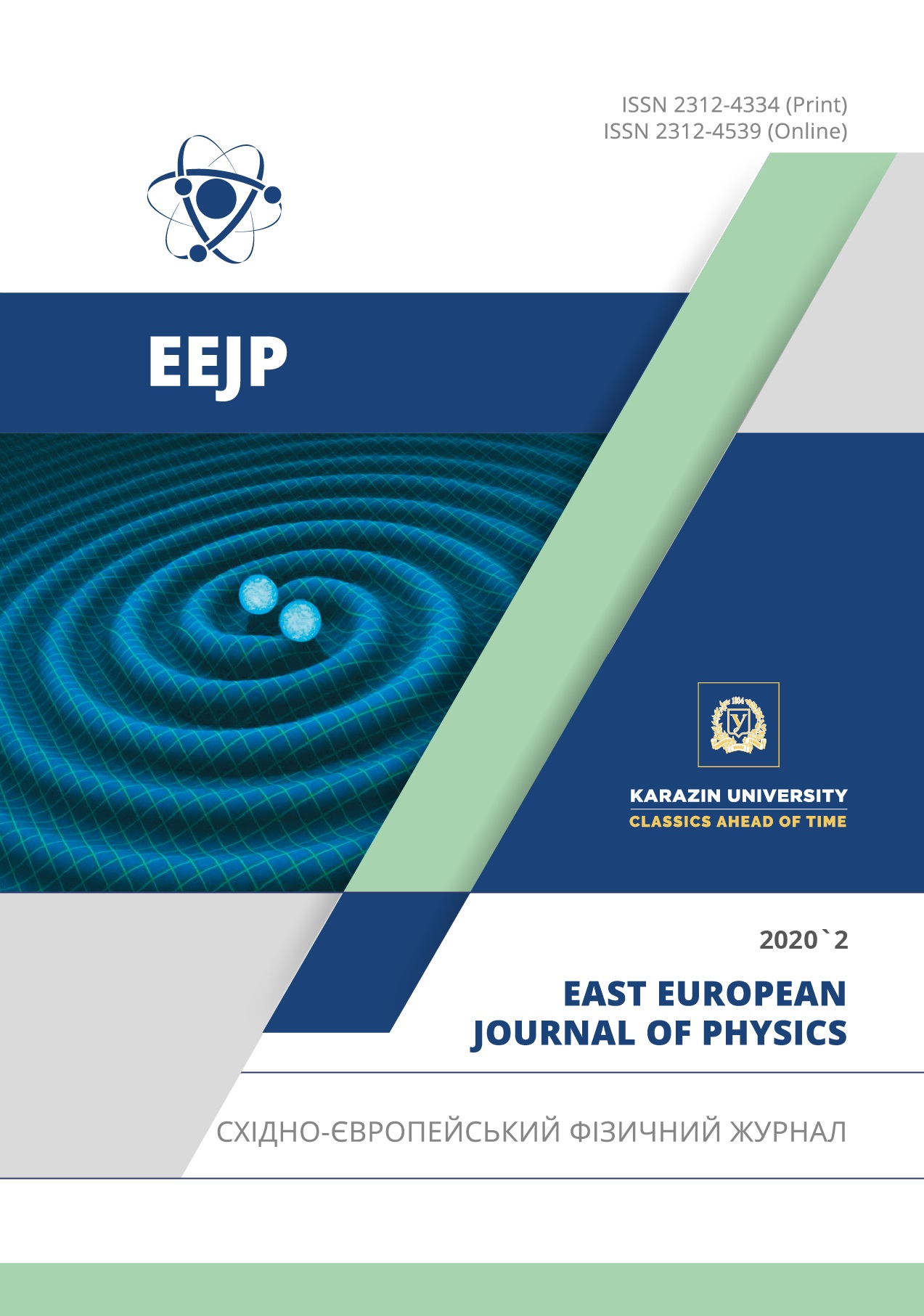Structural, Electronic, Optical and Magnetic Properties of Co2CrZ (Z= Al, Bi, Ge, Si) Heusler Compounds
Abstract
In this paper, we have studied the structural, electronic, optical and magnetic properties of Co2CrZ (Z= Al, Bi, Ge, Si) compounds by using two different methods one is full potential linearized augmented plane wave (FP-LAPW) method as implemented in WIEN2k and second is pseudo potential method as implemented in Atomistic Tool Kit-Virtual NanoLab (ATK-VNL). The respective band gaps in their minority-spin of Co2CrZ (Z= Al, Bi, Ge, Si) are 0.696, 0.257, 0.602 and 0.858 eV near the Fermi level, which is implemented in WIEN2k code and showing 100% spin polarization. Further, these compounds have been found to be perfectly half-metallic ferromagnetic (HMF). However, above mentioned compounds shows zero band gaps in ATK-VNL code. The calculated magnetic moment of these compounds Co2CrZ (Z= Al, Bi, Ge, Si) are 3.06, 4.99, 3.99 and 3.99µB respectively in FP-LAPW method. However, the respective magnetic moment of these compounds is found to be 3.14, 5.08, 4.11 and 4.08µB in ATK-VNL code. Optical properties play an important role to understand the nature of material whether it can be used as optoelectronics device. From the optical Spectra, complex dielectric functions calculated values are 312.370 and 141.991, 299.812 and 111.368, 288.127 and 106.342, 290.688 and 99.095 for the compounds Co2CrZ (Z= Al, Bi, Ge, Si) respectively by using WIEN2k. The maximum energy loss is observed between 11.4 to 13eV for above these compounds. The refractive index values for the compounds Co2CrZ (Z= Al, Bi, Ge, Si) are observed as 18.104, 17.602, 17.252 and 17.289 respectively. In the optical conductivity spectrum a sharp peak is observed at 1.6 - 2.3eV.
Downloads
References
Fr. Heusler and E. Take, Trans. Faraday Soc. 8, 169-184 (1912), http://dx.doi.org/10.1039/TF9120800169.
J. Li, Y. Li, G. Zhou, Y. Sun, and C. Q. Sun, Appl. Phys. Lett. 94, 242502 (2009), https://doi.org/10.1063/1.3156811.
F. Casper, T. Graf, S. Chadov, B. Balke and C. Felser, Semicond. Sci. Technol. 27, 063001 (2012), https://doi.org/10.1088/0268-1242/27/6/063001.
R.A. De Groot, F.M. Muller, P. G.Van Engen and K.H.J. Buschow, Phys. Rev. Lett. 50, 2024-2027 (1983), https://doi.org/10.1103/PhysRevLett.50.2024.
S. A. Khandy, I. Islam, D. C. Gupta and A. Laref, Full Heusler alloys (Co2TaSi and Co2TaGe) as potential spintronic materials with tunable band profiles, J. Solid State Chem. 270, 173-179 (2019), https://doi.org/10.1016/j.jssc.2018.11.011.
T. Graf, C. Felser and S.S.P. Parkin, Prog. Solid State Chem. 39, 1-50 (2011), https://doi.org/10.1016/j.progsolidstchem.2011.02.001.
M. Zipporah, P. Rohit, M. Robinson, M. Julius, S. Ralph and K. Arti, AIP Advances 7, (2017) 055705, https://doi.org/10.1063/1.4973763.
J. Kubler, G. H. Fecher, and C. Felser, Phys. Rev. B, 76, 024414 (2007), https://doi.org/10.1103/PhysRevB.76.024414.
Z.Q. Bai, Y.H. Lu, L. Shen, V. Ko, G.C. Han and Y.P. Feng, J. Appl. Phys. 111, 093911 (2012), https://doi.org/10.1063/1.4712301.
V. Ko, G. Han, J. Qiu, and Y. P. Feng, Appl. Phys. Lett. 95, (2009) 202502, https://doi.org/10.1063/1.3263952.
C. Felser, L. Wollmann, S. Chadov, G.H. Fecher, and S.S.P. Parkin, APL Mater. 3, 041518 (2015), https://doi.org/10.1063/1.4917387.
Z. Bai, L. Shen, G. Han and Y.P. Feng, Spin 2, 1230006 (2013), https://doi.org/10.1142/S201032471230006X.
V. Sharma and G. Pilania, J. Magn. Magn. Mater. 339, 142150 (2013), https://doi.org/10.1016/j.jmmm.2013.03.008.
D.P. Rai, A. Shankar, Sandeep, M.P. Ghimire and R.K. Thapa, J. Theor. Appl. Phys. 7, 1-6 (2013), https://doi.org/10.1186/2251-7235-7-3.
G.H. Fecher, H.C. Kandpal, S. Wurmehl, and C. Felser, J. Appl. Phys. 99, 08J106 (2006), https://doi.org/10.1063/1.2167629.
M. Tas, E. Sasıoglu, C. Friedrich, S. Blugel and I. Galanakis, J. Appl. Phys. 121 (2017) 053903, https://doi.org/10.1063/1.4975351.
H.C. Kandpal, G.H. Fecher and C. Felser, Journal of Physics D: Applied Physics, 40(6), (2007), 1587-1592, https://doi.org/10.1088/0022-3727/40/6/S01.
K. Seema, N.M. Umran and R. Kumar, J. Supercond. Nov. Magn. 29, 401-408 (2016), https://doi.org/10.1007/s10948-015-3271-7.
P. Blaha, K. Schwarz, G.K.H. Madsen, D. Kvasnicka and J. Luitz in: WIEN2k, An Augmented Plane Wave+Local Orbitals Program for Calculating Crystal Properties, editor: K. Schwarz (Technical Universitatwien, Austria, 2001), ISBN 3-9501031-1-2.
J.P. Perdew, K. Burke and M. Ernzerhof, Phys. Rev. Lett. 77, 3865-3868 (1996), https://doi.org/10.1103/PhysRevLett.77.3865.
E. Sjostedt, L. Nordstrom and D.J. Singh, 114, 15-20 (2000), https://doi.org/10.1016/S0038-1098(99)00577-3.
Atomistix ToolKit-Virtual Nanolab (ATK-VNL), QuantumWise Simulator, Version. 2014.3, http://quantumwise.com/.
Y.J. Lee, M. Brandbyge, J. Puska, J. Taylor, K. Stokbro and M. Nieminen, Electron transport through monovalent atomic wises, Phys. Rev. B, 69, 125409 (2004), https://doi.org/10.1103/PhysRevB.69.125409.
H.J. Monkhorst and J.D. Pack, Phys. Rev. B, 13, 5188-519 (1976), https://doi.org/10.1103/PhysRevB.13.5188.
F.D. Murnaghan, Proc. Natl. Acad. Sci. USA, 30, 244-247 (1944), https://doi.org/10.1073/pnas.30.9.244.
D.P. Rai and R.K. Thapa, J. Alloys Comp. 542, 257-263 (2012), https://doi.org/10.1016/j.jallcom.2012.07.059.
S. Wurmehl, G.H. Fecher, H.C. Kandpal, V. Ksenofontov and C. Felser, Appl. Phys. Lett. 88, 032503 (2006), https://doi.org/10.1063/1.2166205.
R. Jain, N. Lakshmi, V.K. Jain, V. Jain, A.R. Chandra and K. Venugopalan, J. Magn. Magn. Mater. 448, 278-286 (2018), https://doi.org/10.1016/j.jmmm.2017.06.074.
S. Sharma, A.S. Verma and V.K. Jindal, Materials Research Bulletin 53, 218-233 (2014), https://doi.org/10.1016/j.materresbull.2014.02.021.
Copyright (c) 2020 Sukhender, Lalit Mohan, Sudesh Kumar, Deepak Sharma, Ajay Singh Verma

This work is licensed under a Creative Commons Attribution 4.0 International License.
Authors who publish with this journal agree to the following terms:
- Authors retain copyright and grant the journal right of first publication with the work simultaneously licensed under a Creative Commons Attribution License that allows others to share the work with an acknowledgment of the work's authorship and initial publication in this journal.
- Authors are able to enter into separate, additional contractual arrangements for the non-exclusive distribution of the journal's published version of the work (e.g., post it to an institutional repository or publish it in a book), with an acknowledgment of its initial publication in this journal.
- Authors are permitted and encouraged to post their work online (e.g., in institutional repositories or on their website) prior to and during the submission process, as it can lead to productive exchanges, as well as earlier and greater citation of published work (See The Effect of Open Access).








